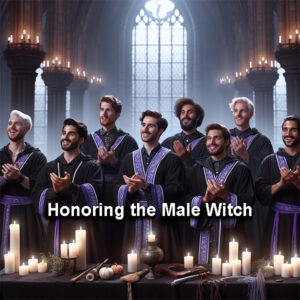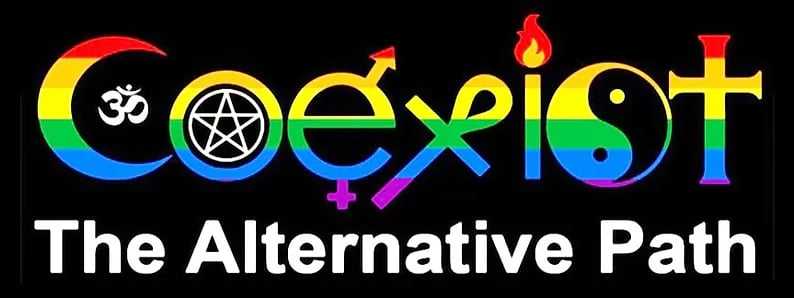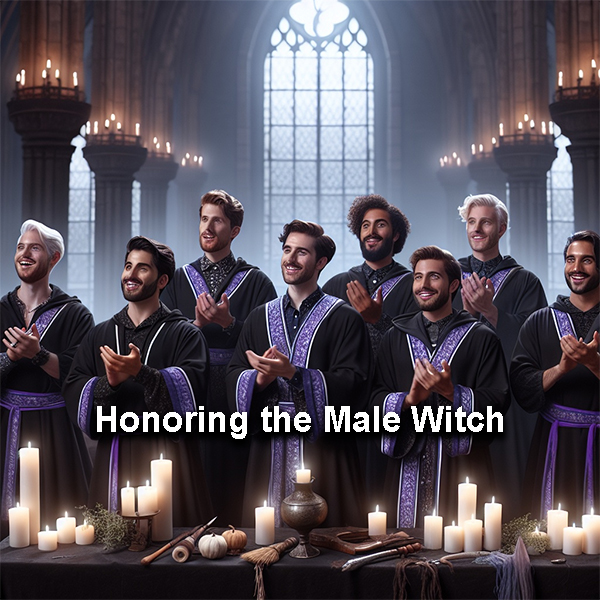 When most people hear the word “witch,” a pretty specific image forms. You probably imagine a mysterious woman in a cottage, stirring herbs into a bubbling pot. Maybe there’s a broom involved, maybe a cat. She’s powerful, feared, and probably misunderstood. That’s the image we’ve inherited for centuries. However, it’s not the full story—not even close. Because the male witch exists, too. He always has. He’s just been hiding behind different names and cultural assumptions.
When most people hear the word “witch,” a pretty specific image forms. You probably imagine a mysterious woman in a cottage, stirring herbs into a bubbling pot. Maybe there’s a broom involved, maybe a cat. She’s powerful, feared, and probably misunderstood. That’s the image we’ve inherited for centuries. However, it’s not the full story—not even close. Because the male witch exists, too. He always has. He’s just been hiding behind different names and cultural assumptions.
Although most witch stories center around women, that’s not the rule. It’s simply tradition—or perhaps habit. Due to history’s preference for patriarchy, tales of magical men often gave them different titles. Accordingly, the male witch often slipped into the background under names like wizard, sorcerer, or even warlock. Yet he’s been casting spells, reading omens, and brewing up energy like his female counterparts all along.
Let’s go back to the word “witch” itself. Interestingly enough, in Old English, “wicca” was a masculine term. So originally, the idea of a male witch wasn’t so strange. It was simply part of the language. But as time passed, the image of the witch became increasingly feminine, leaving the male version overlooked or renamed. As a result, we got a linguistic rift: witches became women, and men became everything else.
We get a lot of male, transgender and non-binary witches visiting our metaphysical shop, come visit! Connect with us for more on Instagram, Facebook (Meta) or TikTok.
Male Witch: Language, Power, and the Labels We Choose
Language matters. Because words shape perception, the male witch became something rare simply due to labeling. The word “warlock,” for example, shows up often in fiction and folklore, but it comes with baggage. While some use it interchangeably with male witch, many witches today steer clear of the term. Why? Because it’s rooted in betrayal. Historically, a warlock was an oath-breaker—someone who infiltrated covens and turned them over to inquisitors.
Although pop culture embraced the word, many modern witches don’t. Instead, they lean into more neutral or reclaimed terms. Some simply say “witch,” regardless of gender. Others prefer words like magician, practitioner, or energy worker. Ultimately, it’s about reclaiming identity in a way that feels authentic. And that’s where the male witch shines: in his ability to redefine magic for himself.
Pop culture gives us no shortage of magical men. Gandalf, Harry Potter, Doctor Strange—all examples of the male witch archetype, even if the word “witch” never appears. Because while they might wield staffs instead of wands or read ancient tomes instead of tea leaves, their purpose is the same. They manipulate energy. They harness unseen forces. And they do it while existing outside of conventional power structures. Witches, wizards, magicians, energy workers – so many names have popped up over time.
The Craft Doesn’t Care About Gender
Witchcraft, at its core, is personal. It’s a spiritual technology. A way of connecting with the divine, with nature, and with the self. Accordingly, it does not care about your gender. Anyone who approaches the craft with intention, respect, and presence can practice it.
Although the modern witchcraft movement skews female in public spaces, men have always been involved. They’ve just often worked in silence or behind other titles. Meanwhile, trans, nonbinary, and genderfluid practitioners have been doing magic all along. Because the craft welcomes the outliers. It always has.
Due to its nature, witchcraft tends to attract those on the margins. Those who question the norm. Those who seek truth in places others overlook. That’s why it resonates so deeply with queer communities. And that’s also why the male witch is making a comeback—not because he never existed, but because he’s finally being seen.
Queer, Magical, and Unapologetic Male Witches
Witchcraft and queerness share some serious overlap. Both challenge the dominant narrative. Both ask us to question what we’ve been taught. And both offer tools for healing, transformation, and self-empowerment. So it makes perfect sense that many LGBTQIA+ folks find a spiritual home within witchcraft.
The male witch, especially one who identifies as queer, brings something potent to the table. He embodies defiance. He carries ancient wisdom while refusing to conform. And he creates space—not just for himself, but for others like him. Because magic is not about fitting in. It’s about standing in your truth.
Social media has helped bring this to light. Platforms like TikTok and Instagram are full of queer and gender-nonconforming witches sharing their craft. Due to their visibility, younger generations are seeing a wider spectrum of what magic looks like. It’s not just crystals and moon rituals anymore. It’s also trauma healing, shadow work, affirmation practices, and ancestral reverence.
Accordingly, the male witch is no longer a whisper. He’s a voice, a presence, and a force in modern magic.
Shadow Work and the Power of Healing
One of the most powerful tools in a witch’s arsenal is shadow work. This practice helps uncover and heal the subconscious wounds we carry. And for many queer and male witches, that work is essential. Because they often grow up in a world that tells them who they should be.
But through the craft, they find something different. They find freedom. They find language for their pain and rituals for their healing. And they find community—both with other practitioners and with unseen forces.
Although shadow work is not exclusive to queer practitioners, it often hits differently. The trauma of being “othered” seeps deep into the bones. Accordingly, the healing has to go deep, too. That’s where the magic lies: not in flashy spells or dramatic rituals, but in the quiet reclamation of self.
Male Witches; Practicing Without Permission
Another beautiful truth about witchcraft? You don’t need anyone’s permission. The male witch does not have to wait for validation. He can cast, create, and conjure on his own terms. Because witchcraft is an inner path. No gatekeeper can close the door to someone who’s already walked through it.
Whether he’s working with herbs, sigils, spirits, or his own breath, the male witch owns his power. And while others may question his place in the craft, he knows the truth: the magic belongs to him, too.
Even so, it’s not always easy. Many male witches still face skepticism. Some encounter resistance within spiritual communities that expect witches to look or act a certain way. But change is happening. Due to increasing visibility and open dialogue, more spaces now welcome all genders into the circle.
A New Narrative for the Witch
As we rethink what it means to be a witch, we must also rethink the narrative. The old story served its purpose, but it’s time to evolve. Witchcraft is not gendered. It never was. It’s energy, will, intention, and relationship. And anyone can step into that space.
Therefore, the male witch is not an anomaly—he’s a missing piece of the puzzle. When we include him, the picture becomes whole. And when we honor the diversity within magic, we make room for everyone to thrive.
So if you’re a man, trans person, or nonbinary individual wondering if the craft is for you, the answer is yes. You belong here. Magic does not discriminate. And neither should the people who practice it.
Honoring the Male Witch in Community
Community matters in witchcraft. Circles, covens, and online spaces help us learn, grow, and stay connected. Therefore, welcoming male witches into these communities strengthens the collective magic. It brings balance. It brings perspective. And it honors the full spectrum of spiritual experience.
Although some traditions still lean heavily toward the feminine, others are evolving. More groups now include rituals that reflect gender diversity. More conversations address the needs of all practitioners. And more voices—like those of male witches—are taking their rightful place.
Ultimately, witchcraft is about relationship. With the earth, with spirit, with the self, and with each other. If someone finds healing and power in the craft, who are we to deny them access? Because the magic doesn’t belong to one type of person. It belongs to all of us.
The male witch is not a novelty. He’s not an outlier. He’s an integral part of the living, breathing tradition that continues to evolve. Let’s honor that. Let’s welcome him. And let’s keep the circle open for every witch, no matter their name.






I think its great that male witches are getting more recognition, but why do we have to label everything? Cant we just focus on the magic and leave the gender discussions aside?
Labels are important for visibility and representation. Gender inclusivity in witchcraft matters.
I dont get why were still stuck on gender labels in witchcraft. Cant we just focus on the magic and energy we bring to the craft? Who cares if youre a male, female, or unicorn witch?! Just do you, man.
Gender can be a powerful aspect of identity in witchcraft. Its not about labels, its about inclusivity.
Tatum, 🙂 To me a male witch is a “witch” – nothing more, nothing less. But, for some it can be identity, which in and of itself is powerful. And hey, it’s their path, their perception/perspective, right? I don’t judge.
Im all for honoring male witches, but can we also talk about the lack of representation for non-binary and genderqueer witches? Lets expand our inclusivity beyond just male and female labels. #WitchyEquality ✨🔮
Excellent Bellamy – I don’t think anyone should be left out, and I won’t. I intend on writing on the topic of “queer magic” if you will. Just haven’t gotten to that yet. So much to write about and takes time. Magic is so individual, so of course it stands to reason to have a conversation or write about all kinds of flavors of practitioners. Thanks for your comment, appreciate you brother. Blessed Be. 🙂
I dont get why were still making a big deal about gender in witchcraft. Cant we just focus on the magic and leave the labels behind? Who cares if youre a male witch or a female witch? Just do your thing and let others do theirs.
I agree, it shouldn’t matter, but I get the point of this – the male witch has been largely overlooked, historically. I mean sure you have Aleister Crowley, Gerald Gardener and a few others, but people for the most part picture a woman in association with witches. Gender energy does matters in witchcraft though. I get this post. Its about diversity, empowerment, and breaking stereotypes.
Thank you, Luca! You get it! 🙂 Blessed Be.
Well said! Hopefully more men will be more open about practicing.
Thank you, Megan 🙂 I hope more men practice too!